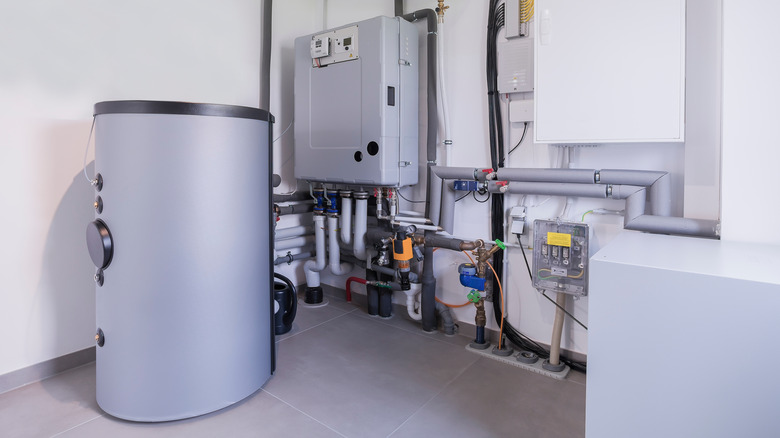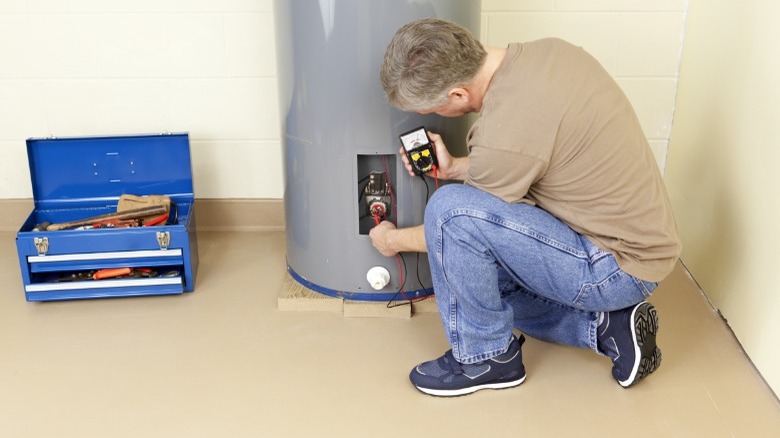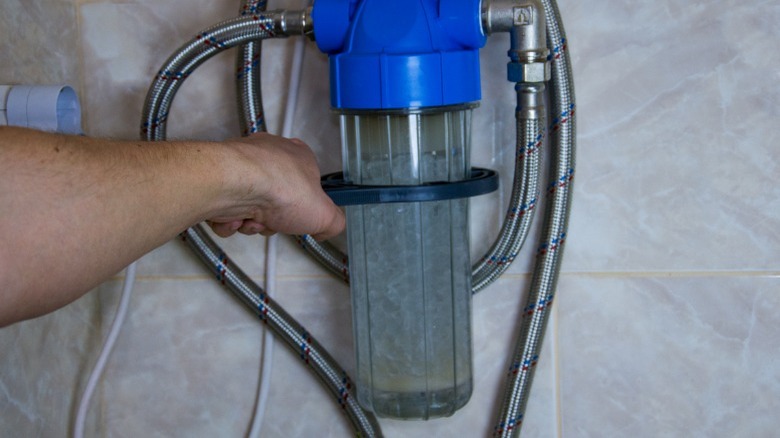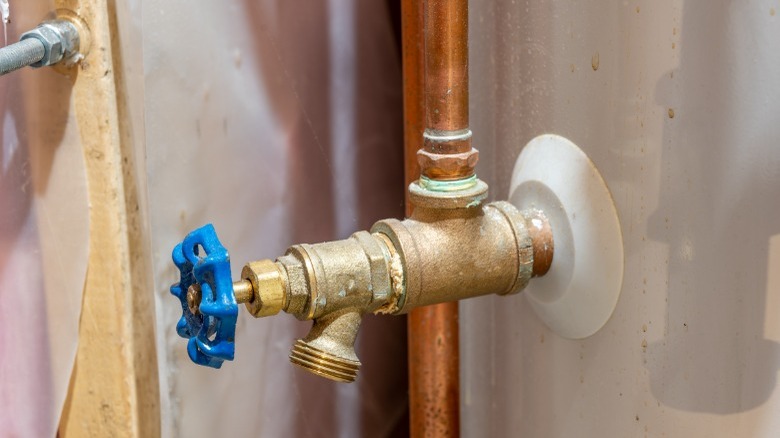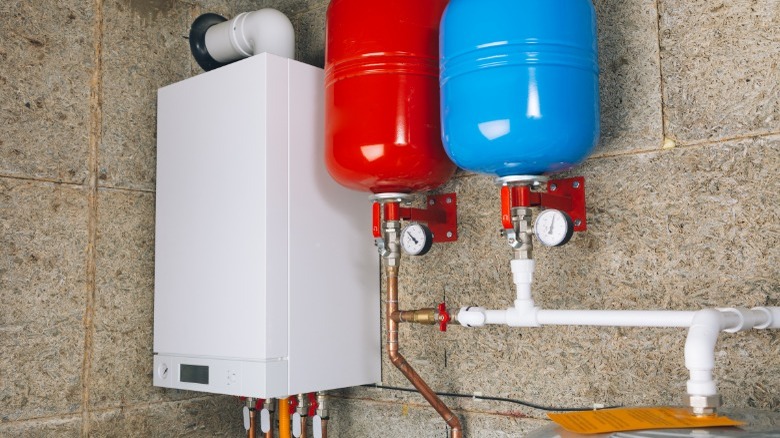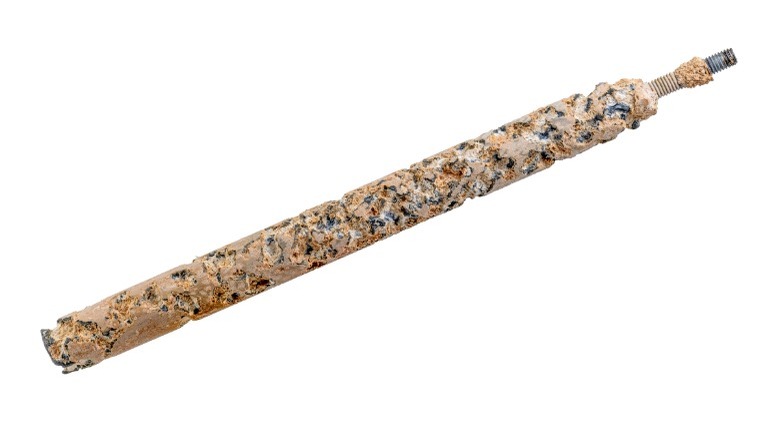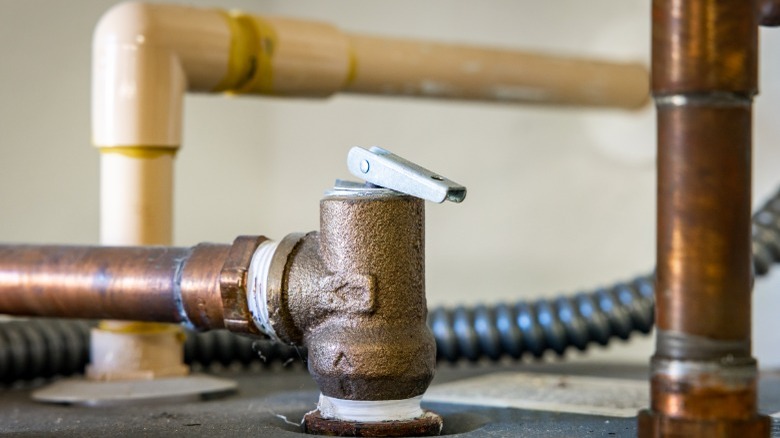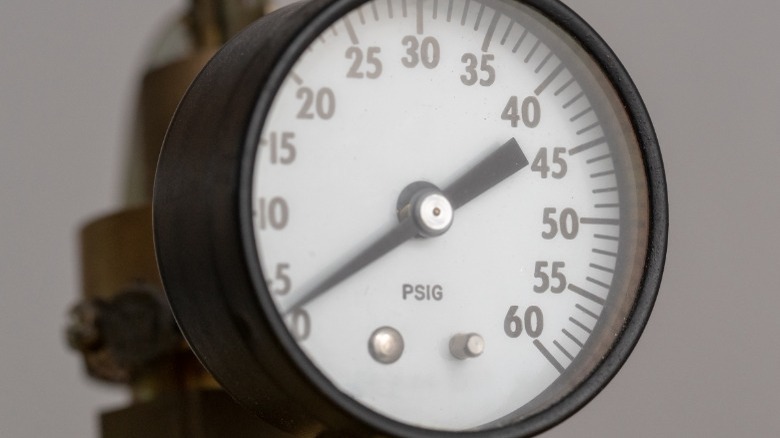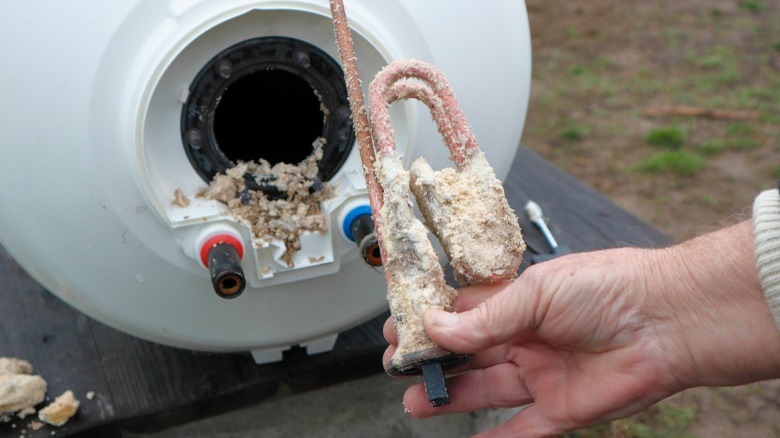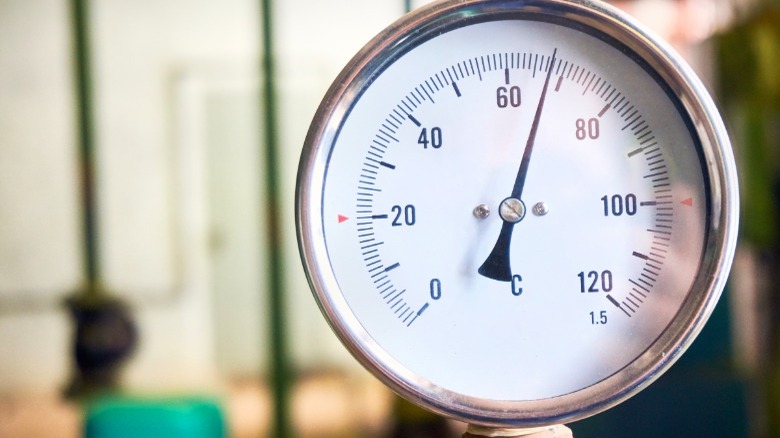How To Extend The Lifespan Of Your Water Heater
Your water heater is a significant purchase at an average cost of around $1,500. Since it lasts on average six to 12 years, it makes sense that you would want to do everything you can to maximize its life expectancy. There is of course no guarantee on how much extra time you might squeeze out of it, but there are people who have one working for 20 to 30 years! Knowing this is possible might motivate you to take better care of your own unit.
This can be accomplished with a few simple steps. They might add to your to-do list but won't overburden you with constant care. Keeping up with things like routine maintenance, flushing the tank regularly, and getting water softeners can help you carve out a few extra years. Below are all of the precautions you can take to keep yours in tip-top shape.
Vigilance with routine maintenance
Routine maintenance is one of the most important parts of extending the lifespan of your water heater. Start by writing down all the important facts about your unit. Include the model number, the serial number, the brand and gallon capacity, the age of your water heater, and its location in your home. Next, familiarize yourself with the controls. Learn how to shut it off if you smell gas, and how to shut off the water supply in case of a leak.
Do a visual inspection and make sure you notice any wet spots or areas that may indicate a leak. If you have a gas water heater, inspect the gas lines. Look for any excessive wear, cracks in the body, rust, or possible leaking or gaps in the joints. Any signs of damage can ultimately pose a threat to your heater's lifespan, so be sure to examine it thoroughly and address any issues immediately.
Install a water softener
Many households today have hard water. Unfortunately, it's terrible for your water heater and can significantly shorten its lifespan. The buildup of sediment and limescale can eventually clog up your pipes and lower the water pressure. This will also raise your energy costs. Installing a water softener is one of the best things you can do to minimize potential damage and maximize its lifespan. A water softener works by removing most of the minerals in hard water, thus reducing the chance of damage.
Additionally, there are multiple other benefits. You will use half as much soap and detergents with soft water, and the water is better for your health, skin, and hair. All of your appliances that use water will run better, and your energy costs will be reduced. You won't have to worry about cleaning those hard water spots, and calcium buildup will become a thing of the past. Overall, installing a water softener is one of the best things you can do to get more life out of your water heater as well as your other appliances.
Flush the tank regularly
Over time, whether you have hard or soft water, sediment will gather at the bottom of the tank. This sediment causes problems, including possible pressure valve or drain blockage. If the pressure valve gets blocked, the unit risks exploding. Corrosion can cause irreparable damage. For this reason, it will be necessary to drain and flush out the tank as part of the routine maintenance. If you have hard water, you may need to do this about every six months. Otherwise, it will be an annual chore.
Start by shutting off the power to the hot water heater. For gas, turn the thermostat setting to "pilot," and for electric, shut it off at the main breaker. Next, you'll need to turn off the cold water supply, typically a blue spigot located on top of the tank. Allow the water in the tank to cool down to reduce the risk of burns. Doing this in the evening and allowing it to cool overnight should be enough. Locate the drain valve and connect a garden hose, placing the other end in the bathtub, shower, or outside. If the hose doesn't fit, you may have to buy a connector. Turn on one of the hot water faucets in your house, and open the drain valve on the tank. Leave the hot water running. Check for sediment every 10 minutes by letting the water drain into a bowl and allowing it a moment to settle. When the water runs clear, shut off the hot water faucet and turn the cold water supply to the tank back on. Run the cold water until it's totally clear from the hose, then disconnect it and shut the valve while the tank refills. Restore power.
Add an expansion tank
An expansion tank is another way to help your water heater last longer, especially with a closed plumbing system. In a closed system, water comes into your home from the supply line, but can't go back out. The problem is that water expands when it gets hot, and in a closed system, there's no place for it to go. This can lead to pressure buildup and eventually damage your heater or pipes. An expansion tank provides a space for the extra water to go, so there's no excess pressure.
Since most homes today are built with a closed system, if you don't already have an expansion tank, you probably need one. To know for sure if your system is closed, check for a backflow prevention device such as a pressure-reducing valve. You will typically find it connected to the main shutoff valve for your water to the house. If you're unsure where that is, look for it either in the basement, in a utility closet, or on an outside wall. If you can locate this device, you have a closed system.
Check the anode rod
When flushing the water heater of sediment, be sure to change the anode rod when necessary to extend the life of your water heater. What in the world is an anode rod? It's a long rod made of aluminum or magnesium that's placed inside the tank to prevent corrosion. Instead of the steel tank becoming rusty and corroded, the rod attracts the minerals and wears down instead. This innovation will need to be replaced about every three to five years, so when you're performing your annual maintenance task of flushing out the tank, always check the condition of the anode rod.
Luckily, the cost is only about $20 to $50, and it's a simple DIY repair. If you have hard water, magnesium is the best choice. If your water is very soft with a low pH, aluminum will corrode slower. When the tank is empty or draining, look for a hexagon-shaped fitting. It's usually at the top of the water heater but sometimes on the side. Then use a pipe or socket wrench to loosen and unscrew it. Then remove the rod and replace it with a new one after wrapping the threads with teflon or plumber's tape. This seals it to keep moisture from leaking out. Then, simply finish the task of flushing the tank and refilling it as normal.
Take advantage of vacation mode
Whenever you're going to be away from home for any length of time, take advantage of vacation mode for energy efficiency and preservation. Even if your model water heater doesn't have one, there's a simple way to accomplish the same results. Doing this will keep the water at about 50 degrees Fahrenheit so it won't freeze. It's a great way to save money and keep your water heater from working too hard, especially when no one is there to use it.
Many models have vacation mode as a setting on the thermostat. Go through the menu to see if it comes up, and if so, simply push the button, and it does the rest. If yours doesn't have the setting, you can manually turn the thermostat to "pilot" mode on a gas water heater. For an electric water heater, you can manually adjust the temperature down to about 50 degrees Fahrenheit. This simple trick saves both money and wear and tear on your appliance.
Perform tests on the T&P valve
Called the T&P valve for short, the temperature and pressure relief valve is an emergency system to keep your water heater from exploding. Unsafe temperatures or pressure will trigger the safety valve to release. Typically, the valve releases water or air if the temperature reaches 210 degrees Fahrenheit or the pressure rises to 150 psi (pounds per square inch). If you ever see your valve dribbling small amounts of water, it's usually because the pressure is too high, and it's releasing it. When the temperature is too hot, the valve releases large quantities of water until the probe cools. Usually, this valve will last as long as the water heater does, but excessive sediment or corrosion can sometimes damage it. If the valve isn't functioning correctly, it can put added stress on the tank and shorten its lifespan.
To run an annual maintenance test on the valve, do so before flushing the tank. It is located within the top six inches of the tank, either on the top or the side, and has a probe attached going into the water. There should be discharge tubing firmly attached to the valve, preferably leading to a floor drain. If the tubing is not running to a drain, put a bucket underneath it for testing. The test lever is a small metal handle, so lift it up for a moment and then let it snap back into place. A small amount of water should be released accordingly. If the water does not release or shut off all the way, the valve should be replaced.
Test your water pressure
When water pressure is too high, the stress on the tank can reduce its lifespan. Normal water pressure in your home should be under 80 psi; being between 50 to 70 psi is the sweet spot. If you get water from the city, it must be under 80 psi. To test your water pressure, use a water pressure gauge. Before you start, make sure all the appliances that use water are off in the house. You don't want anything interfering with the main pressure reading. Attach it to a faucet and make sure it reads 0 psi before turning on the water.
Turn on the faucet, and look at the reading to be sure you're in the normal range. If not, you might either need to buy a water pressure regulator or replace the one currently installed. Since most modern homes have one, you most likely need to replace it with a new one. Making sure your water pressure is not too high will help maximize your water heater's lifespan.
Descale it
Limescale is a problem people with hard water deal with on a continual basis. For a hot water heater, too much of it can shorten its lifespan and cause irreparable damage. In an electric water heater, it gathers on the electrodes. It also accumulates on the bottom of the tank. Even if you don't have hard water, silt and dirt will still accumulate over time. Incidentally, you can install a sediment filter on the incoming water supply to catch some of it.
To descale the heater, drain the tank and flush it out. While doing this, check the bottom of the tank for large deposits. If you see some, you can use a wire hanger or brush to scrape and loosen them. Scrape off any mineral deposits carefully from any elements. You should be able to remove the majority of it with a bit of patience and some elbow grease. It's not really advised to use a chemical for limescale in the hot water heater because of residue that could get into the water. If you do need or choose to use a chemical, consult the manufacturer for suggestions first.
Adjust the temperature
Lastly, always ensure your water heater is adjusted to the right temperature and is not too hot. Keep it at the lowest temperature possible to ensure it is not overexerting itself as an appliance. To change the temperature on your water heater, first locate the dial on the side of the tank. Using a screwdriver, remove the cover and use a flathead screwdriver to adjust the temperature. Remember to do this when you leave the house for a period of time if you don't have vacation mode.
Typically, the suggested temperature is about 120 degrees Fahrenheit. By keeping your water heater at or below this temperature most of the time, you will maximize its performance. Doing this, along with these other simple suggestions where applicable, will help your water heater meet and exceed all expectations. Taking good care of this appliance can double the years you get out of it, so it's well worth the trouble.
